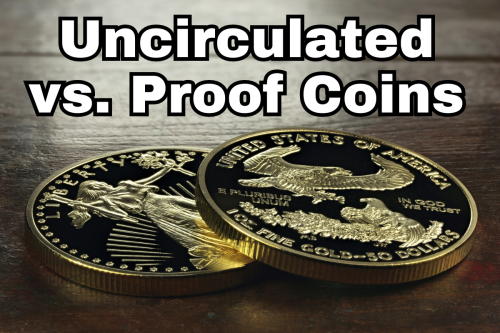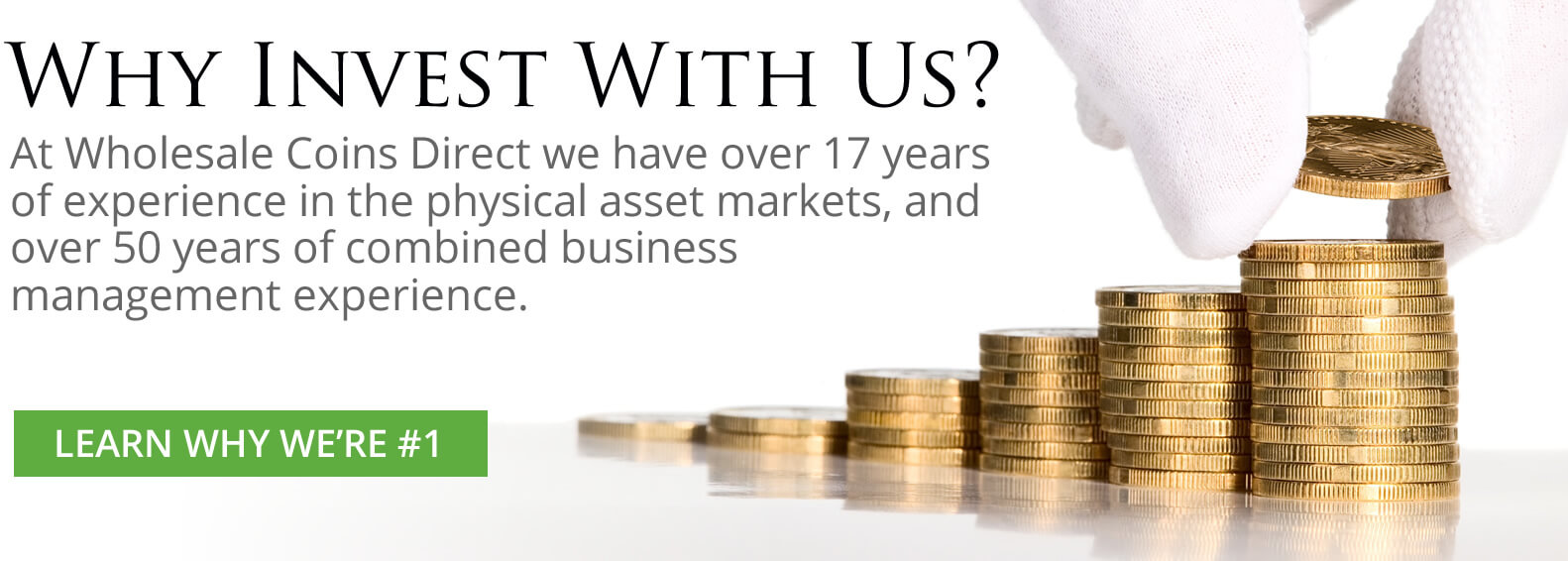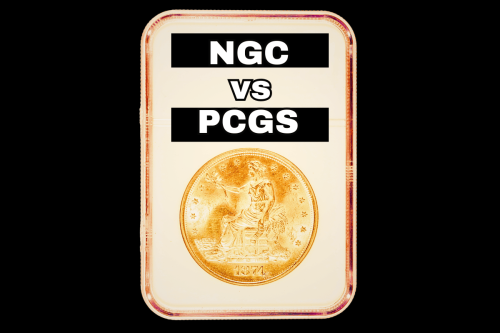
Uncirculated vs. Proof Coins: What Is the Difference?
When facing the decision of where to place your hard-earned money, the distinction between uncirculated vs. proof coins is more than a collector's quandary. It's an investor's strategy. The gleam of a freshly minted coin holds promises of wealth, history, and artistry that appeal not only to collectors but to savvy investors aiming to diversify their portfolios.
But what makes one piece of metal more valuable than another? Is it the rarity, the minting process, or perhaps the story it tells?
This article peels back the layers of mystique surrounding these two prime categories of coins. By understanding their differences, you're unlocking the door to informed investment decisions that could not only safeguard but potentially enhance your financial future.
Coins Basics
For many people, coins are more than just currency. They are miniature pieces of art, history, and investment rolled into one.
The process of creating coins involves sophisticated machinery and a high level of craftsmanship. Coin presses play a pivotal role in this process. These machines exert immense pressure on metal discs, imprinting them with designs that celebrate events, honor figures, or symbolize values.
The ability of coin presses to strike coins with precision ensures that each coin's design is clear and detailed, making them not only legal tender but also collectible items.
Investing in coins is a smart move for those looking to diversify their investment portfolio. Coins, especially those made from precious metals like gold and silver, can hold their value over time. This is much unlike paper currency, which can be subject to inflation. This makes coins an attractive option for investors aiming to preserve their wealth and potentially earn returns on their investments.
The variety of coins available means there's something for every type of investor, whether you're drawn to the historical significance of older coins or the aesthetic appeal of modern commemorative pieces.
What are Uncirculated Coins?
Uncirculated coins are a specific type of coin that has never been used in everyday transactions. Unlike the coins you might find in your pocket, these coins have been specially handled and processed to avoid the wear and tear of circulation.
They are struck by the mint using special procedures to ensure they retain their original luster and detail. The result is a coin that looks exactly as it did the day it left the mint, with no scratches, marks, or signs of wear.
Buying coins, especially uncirculated coins, is a popular option for collectors and investors alike. Uncirculated coins are often sought after for their beauty and pristine condition, as well as their potential to increase in value over time.
For example, certain uncirculated coins from limited mintage series can become rare as demand outstrips supply. This makes them highly valuable to collectors.
The production of uncirculated coins involves careful handling and packaging to ensure they remain in mint condition. These coins are typically struck twice to bring out the full detail of the design, and they are handled with gloves and packaged in protective cases to prevent any damage.
The meticulous process and the care taken in producing uncirculated coins make them a premium product in the world of coin collecting and investing. Their untouched condition and aesthetic appeal make uncirculated coins a standout choice for those looking to add something special to their collection or investment portfolio.
What are Proof Coins?
Proof coins are a special kind of coin that stands out for their exceptional quality and finish. Mint proof coins are created using a specific process that differs significantly from how regular coins are made. The main goal is to produce coins with a mirror-like surface and exquisite detail that appeals to collectors and investors alike.
To create proof coins, the mint uses highly polished dies and specially treated blanks. This process ensures that the coins exhibit a shiny background with frosted, detailed designs. The contrast between the two finishes makes the design of the coin pop, giving it a stunning visual appeal that's much admired among collectors.
Producing mint proof coins is labor-intensive. It requires multiple strikes with the press to achieve the desired sharpness and clarity. This careful attention to detail means that proof coins are produced in much smaller quantities compared to regular coins which add to their exclusivity and collectible value.
Collectors and investors seek out proof coins not just for their beauty but also for their potential to appreciate in value over time. Because of their limited production, superior quality, and aesthetic appeal, proof coins can be a highlight in any collection. They often come packaged in protective cases directly from the mint to ensure they remain in pristine condition.
Uncirculated vs. Proof Coins
When delving into the world of coin collecting and investment, understanding the differences between uncirculated and proof coins is crucial. Both types offer unique characteristics that appeal to different preferences and investment strategies. Here's a closer look at how these two types of coins stack up against each other.
Quality and Appearance
Uncirculated coins are known for their pristine condition due to having never been used in transactions. They possess a shiny surface but lack the mirror-like finish of proof coins. These coins are struck only once which results in a detailed yet less refined appearance compared to proof coins.
Proof coins, on the other hand, boast a superior level of detail and finish. The mint uses polished dies and multiple strikes to achieve a high-quality design with a frosted appearance on a mirror-like background. This intricate process gives proof coins their distinctive look.
Production Process
The production of uncirculated coins is less labor-intensive than that of proof coins. While they are handled carefully to avoid marks and scratches, the focus is on preserving their mint condition rather than enhancing their aesthetic appeal. Uncirculated coins are typically produced in larger quantities than proof coins which makes them more accessible but less exclusive.
Proof coins require a more meticulous process involving special dies and multiple strikes. This not only enhances the design's sharpness and clarity but also limits the number of coins produced. The limited production runs, combined with the exceptional quality, contribute to the higher value and collectibility of proof coins.
Investment Value
From an investment perspective, both uncirculated and proof coins have their merits. Uncirculated coins are often valued for their condition and rarity, especially in series with limited mintages. Their appeal lies in their mint condition and potential for appreciation over time.
Proof coins are typically more expensive at the outset due to their superior craftsmanship and limited availability. Collectors and investors prize them for their aesthetic qualities and the potential for significant appreciation. The exclusivity and beauty of proof coins often make them a centerpiece of collections, with some examples seeing substantial increases in value.
The Role of Grading and Certification
A coin's grade is a measure of its condition and quality, ranging from poor to perfect. Grading is done by professionals who examine coins for wear, damage, and overall appearance. The higher the grade, the more valuable the coin is likely to be.
Certification involves sending a coin to a reputable grading service where it is evaluated, graded, and then sealed in a protective case with its grade displayed. This process not only authenticates the coin but also protects it from damage. This makes it more appealing to collectors and investors.
Certified coins are often seen as more trustworthy and can fetch higher prices in the market.
Understanding the grading system can be complex, but it's crucial for anyone looking to invest in coins. Grading and certification can significantly affect a coin's value which makes it important to consider these factors when buying coins.
Making the Right Choice for Your Portfolio
When deciding which coins to add to your portfolio, consider your long-term investment goals. Are you more interested in the historical and collectible value of coins, or are you looking for investments that will appreciate over time? Your interest in the hobby aspect of coin collecting versus the investment potential will guide your choices.
It's also wise to research and understand the market for coins. Factors such as rarity, demand, and the coin's condition can all influence its value.
Whether you lean towards uncirculated or proof coins, each type has unique benefits that can complement your investment strategy. By carefully selecting coins that align with your goals, you can build a diverse and valuable portfolio.


Investing in Elegance
In exploring the nuanced world of uncirculated vs. proof coins, we've uncovered the layers that contribute to their allure and potential as investments. This distinction is crucial for anyone looking to diversify their portfolio with precious metals.
At the U.S. Gold Bureau, we pride ourselves on guiding investors through these choices by ensuring they make decisions that align with their financial goals. Our unique position in the industry, coupled with a commitment to education and transparency, makes us a preferred partner for both new and seasoned investors.
Grab our free precious metals investor guide and take the first step toward an informed investment journey.








